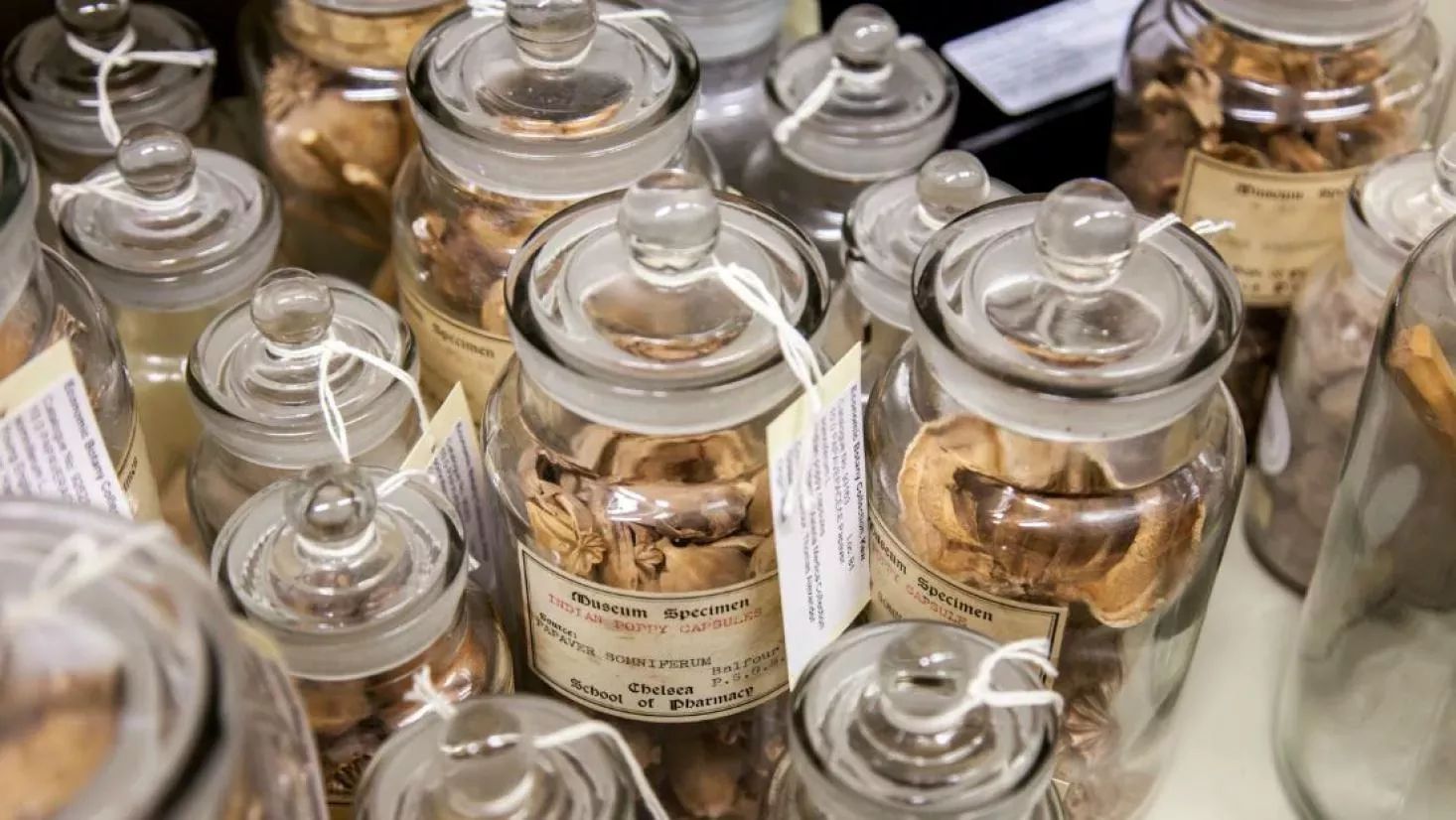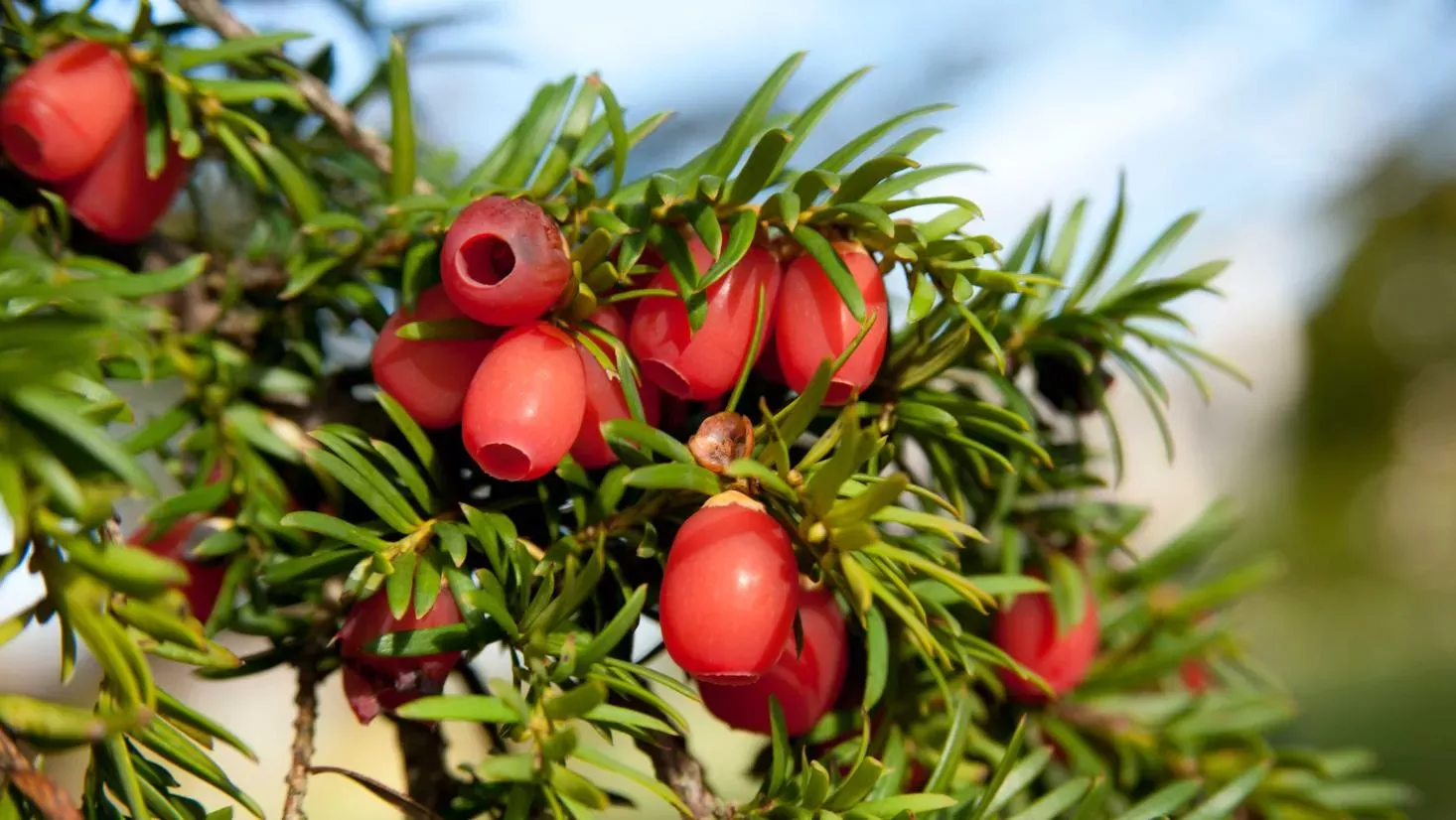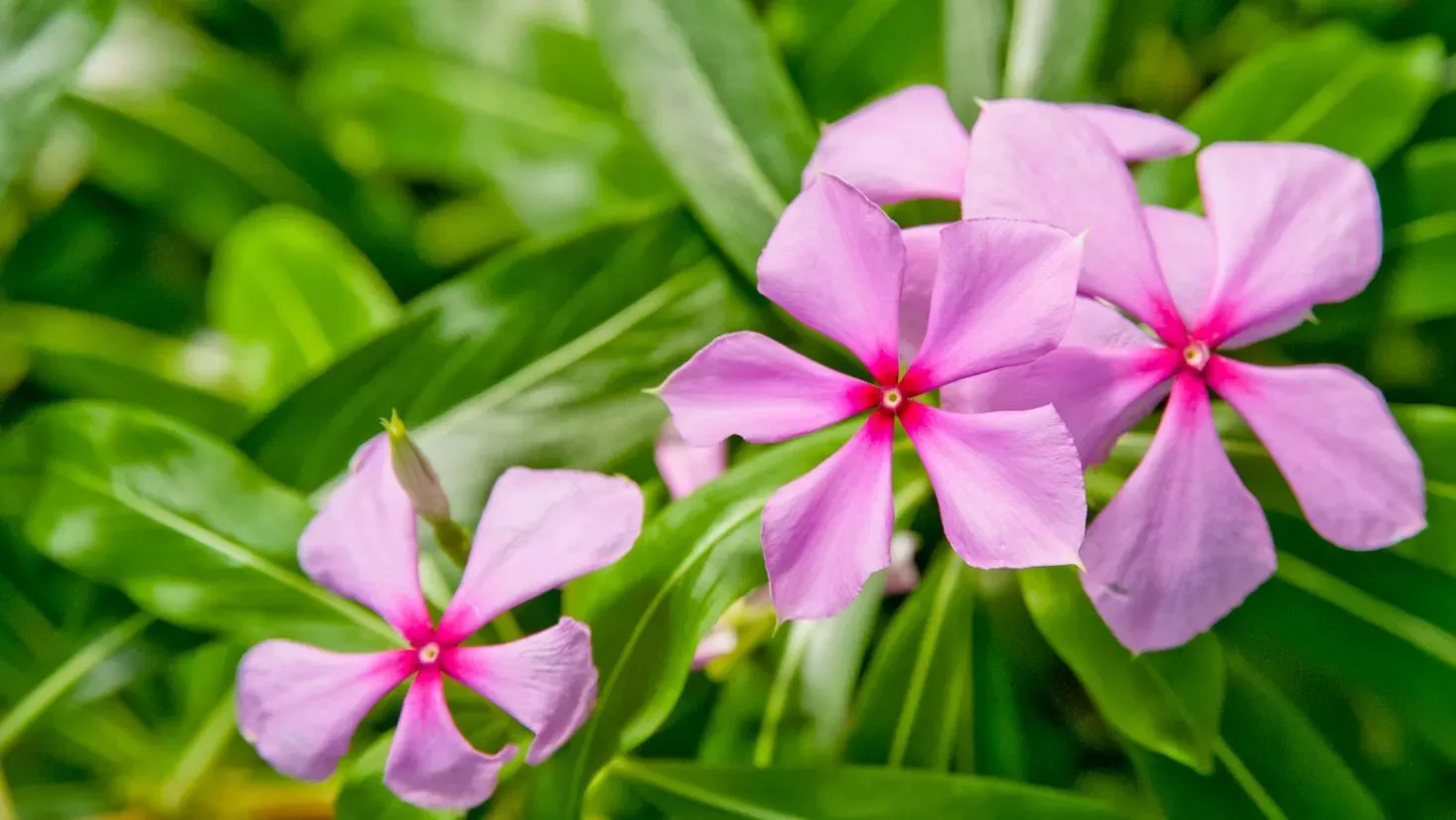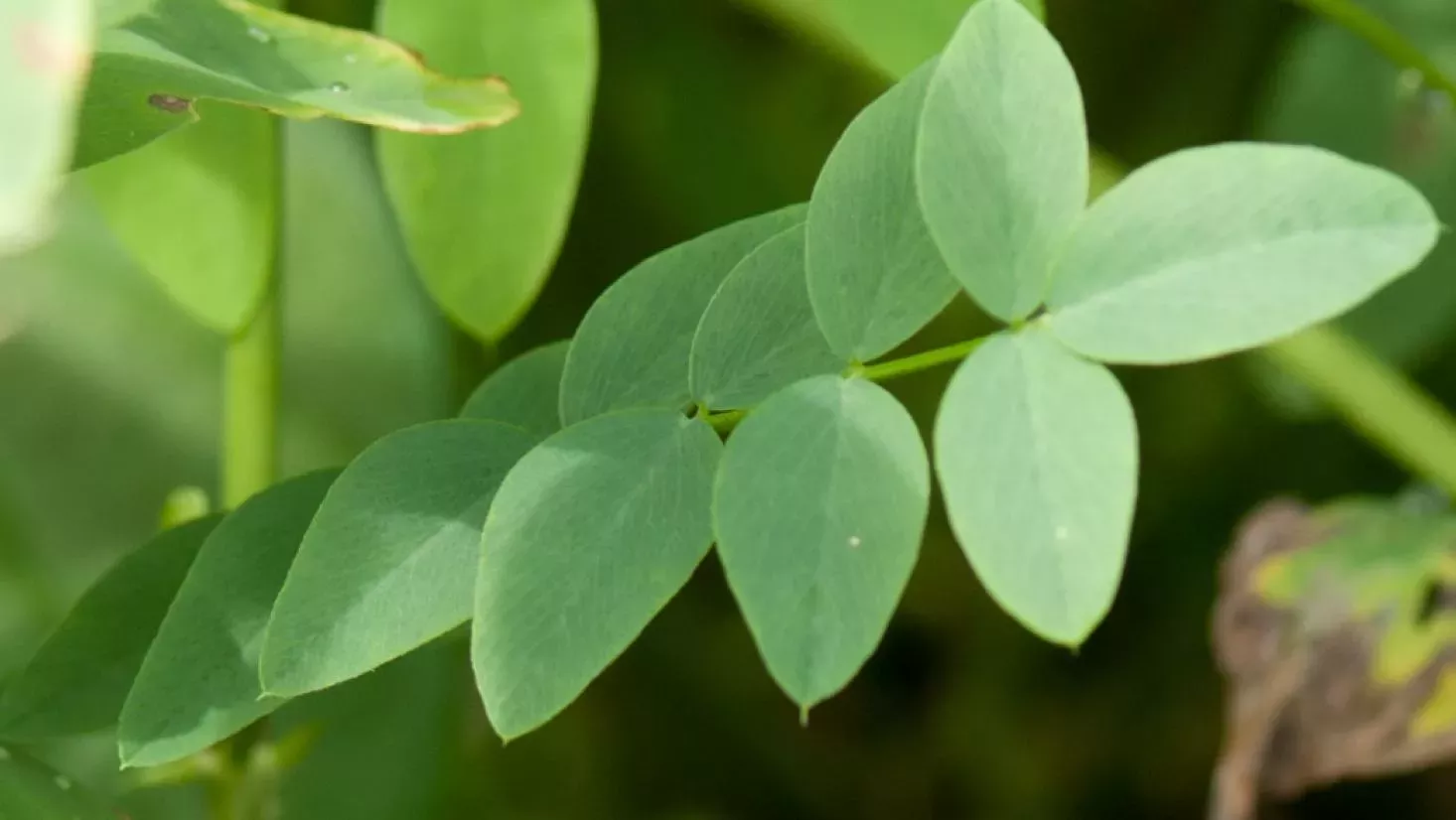28 February 2018
Plants and the evolution of anticancer drugs
Kew scientist Melanie-Jayne Howes shares the impact that drug discovery from plants has had on biodiversity, humanity and conservation.

Plants: better chemists than humans?
Plants produce complex and diverse chemicals as a strategy to survive.
Many of these chemicals have been developed as medicines and may have never been discovered without investigating plants and their constituents.
In the nineteenth century, the practice of isolating single chemicals from plants and formulating these as medicines revolutionised drug discovery.
In the same period, an extract from roots of the may apple plant (Podophyllum peltatum) was described to have anti-tumour activity, yet it was not until the following century that the main active component, podophyllotoxin, was discovered.
Plant chemistry research revealed another species, P. hexandrum, to contain higher levels of podophyllotoxin. Now it’s the preferred source to semi-synthesise the anticancer drugs etoposide and teniposide.

Saving biodiversity through sustainable solutions
At times the quest to find new plant-derived anticancer drugs has had alarming consequences.
Early research into medicinal natural products did not appreciate the consequences of overharvesting plants from the wild or exploiting biodiversity.
Thankfully, the field has evolved. Today, international agreements combined with conservation strategies aim to protect biodiversity. So now we have restrictions on the trade of some plants to help ensure their survival in nature is not threatened. For example, the trade of some parts of P. hexandrum, is regulated.
The Pacific yew tree, Taxus brevifolia, was the original source of the anticancer drug paclitaxel, but extracting this drug from the bark actually damaged trees. It contributed to the decline in populations of this species by around 30% within the last three generations.
It is now classified as Near Threatened by the International Union for Conservation of Nature.
Research in plant chemistry and knowledge of taxonomy enabled a more sustainable solution. Nowadays, paclitaxel and other useful anticancer drugs can be obtained by semi-synthesis from precursor chemicals from leaves and twigs of the common yew (T. baccata).
Such knowledge can also aid discovery. For example, a constituent, homoharringtonine, from Cephalotaxusspecies, in the same plant family (Taxaceae) as Taxus species has been developed into the antileukaemia drug omacetaxine.

Plants are not one-trick ponies
Plants have also been a source of other useful anticancer drugs. For example, the anticancer drug topotecan is derived from a chemical sourced from the happy tree (Camptotheca acuminata), and vincristine and vinblastine were originally from the Madagascar periwinkle (Catharanthus roseus).
Vital research into the properties of such natural chemicals also means that we can find various medical and other uses from the same plant. For example, even natural product derived drugs used for other diseases such as malaria (artemisinin from sweet wormwood; Artemisia annua) and pain (aspirin, originally based on a plant chemical from willow, Salix species) are being investigated for use in cancer therapeutics. The antidiabetic drug metformin has a chemical structure similar to chemicals in the plant goat’s rue (Galega officinalis), and now metformin is also of interest as a possible anticancer medicine.


There is also much interest in the role of plant chemicals in our diet that may help protect against some diseases such as cancer and Alzheimer’s disease. I am currently looking into the role that plants may have to support health, and to prevent or alleviate some diseases such as dementia.
Plants have long been a key source of important drugs that continue to be used today. We can harness the power of the natural world to save lives, and do it in a way that protects the plant kingdom too.
My research at Kew investigates the scientific basis for the uses of plants and their constituents, including as medicines and for health, and supports ethical research and conservation strategies for protecting biodiversity. Long may plants continue to master the art of medicine.
For more information on this work you can read the full article, published on 28 February 2018:
Howes, M-J.R. (2018). The evolution of anticancer drug discovery from plants. The Lancet Oncology 19 (3) 293–294. DOI: 10.1016/S1470-2045(18)30136-0. Available online
Further reading
Perry, N.S.L., Menzies, R., Hodgson, F., Wedgewood, P., Howes, M.-J.R., Brooker, H.J., Wesnes, K.A. & Perry, E.K. (2018). A randomised double-blind placebo-controlled pilot trial of a combined extract of rosemary, sage and melissa, traditional herbal medicines, on the enhancement of memory in normal healthy subjects, including influence of age. Phytomedicine. 39: 42–48.
Howes, M.-J.R. (2018). Phytochemicals as anti-inflammatory nutraceuticals and phytopharmaceuticals. In Chatterjee, S., Jungraithmayr, W., Bagchi, D. (Eds.) Immunity and Inflammation in Health and Disease. Emerging Roles of Nutraceuticals and Functional Foods in Immune Support. Academic Press (Elsevier), UK. 363–388.
Howes, M.-J.R. & Simmonds, M.S.J. (2015). Pharmacognosy in the United Kingdom: Past, Present, and Future. Science 350 (6262 Suppl.): S57–S58.
Abuhamdah, S., Abuhamdah, R., Howes, M.-J.R., Al-Olimat, S., Ennaceur, A. & Chazot, P. (2015). Pharmacological and neuroprotective profile of an essential oil derived from leaves of Aloysia citrodoraPalau. Journal of Pharmacy and Pharmacology 67: 1306–1315.
Howes, M.-J.R. & Simmonds, M.S.J. (2014). The role of phytochemicals as micronutrients in health and disease. Current Opinion in Clinical Nutrition and Metabolic Care 17: 558–566.
Howes, M.-J.R. & Perry, E. (2011). The role of phytochemicals in the treatment and prevention of dementia. Drugs & Aging 28: 439–468.



.png.webp?itok=fy47fI7-)
